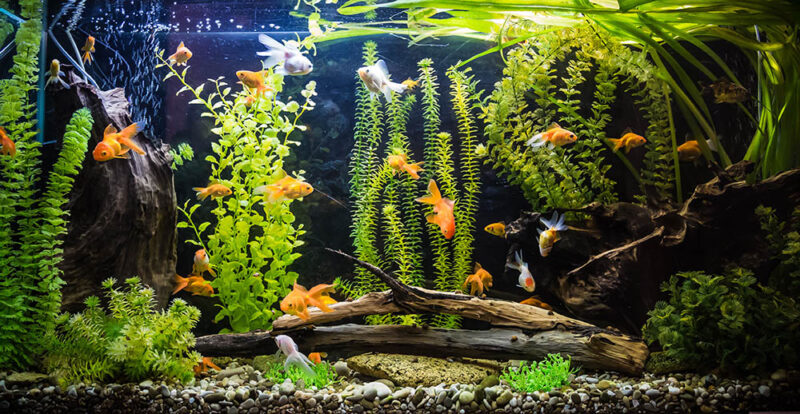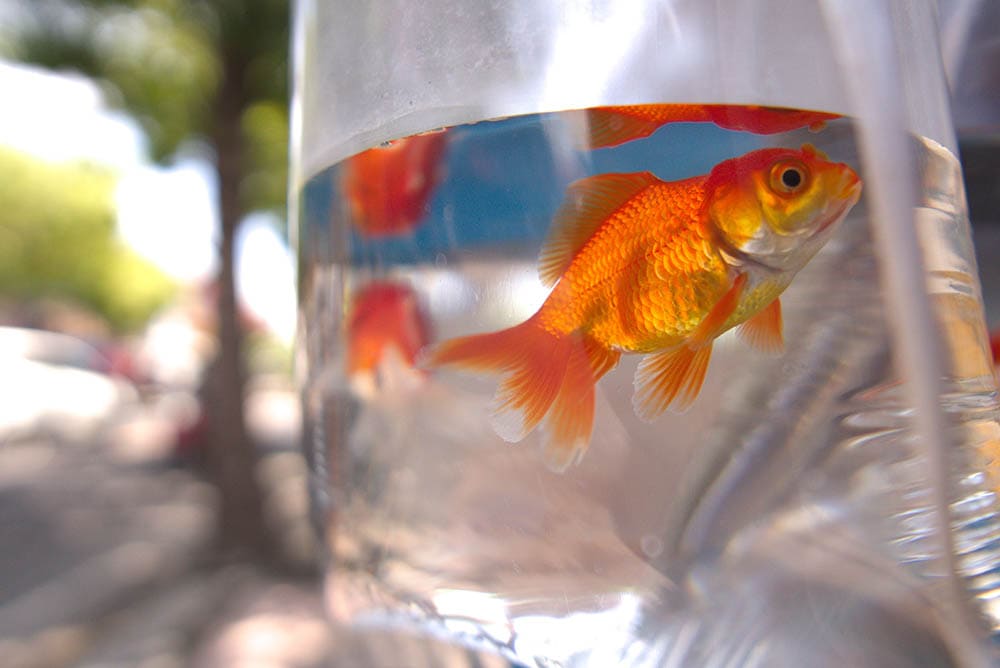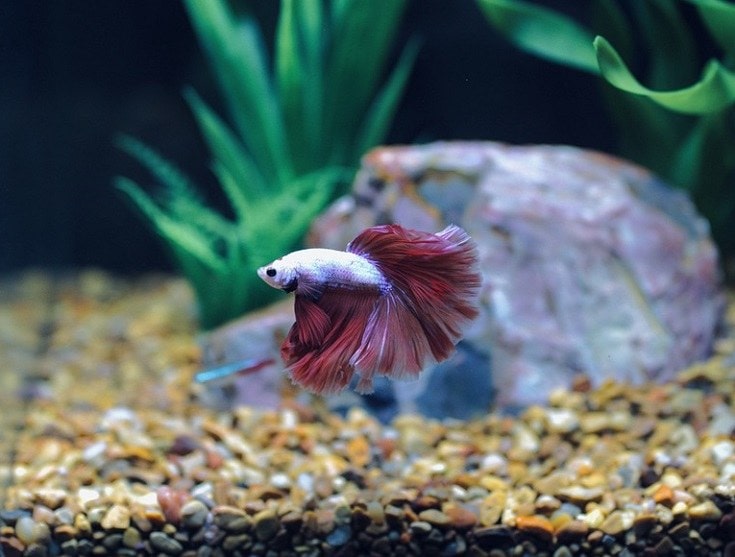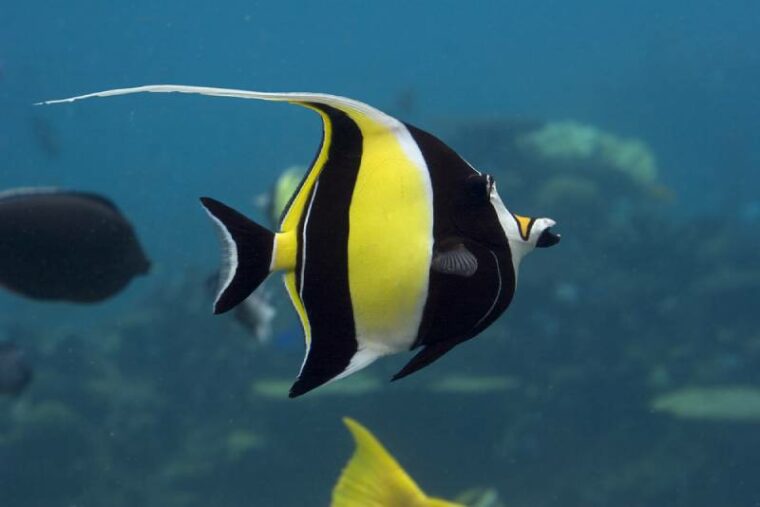
Finding Nemo is a classic film franchise released in 2003, featuring various marine fish species in the South Pacific Ocean. Some of the more recognizable characters include two Clownfish, Marlin and Nemo, and a forgetful Regal Blue Tang fish named Dory. Aside from the main characters, many other sea creatures are shown in the film. One of those sea creatures is a Moorish Idol fish known as Gill.
So, who exactly is Gill from Finding Nemo and what species of fish is he? This article will tell you everything you need to know.
Who Is Gill from Finding Nemo?
Gill is portrayed as a magnetic and nonchalant minor character in the 2003 Finding Nemo film produced by Pixar Animation Studios. He made an appearance in the first film in a glass tank displayed in a dentist’s office and was voiced by Willem Dafoe. Gill is easily recognized by his shredded fin and scarred body with black and white stripes. Nemo was wary of Gill because of his scarred appearance in the beginning but soon warmed up to this wise fish.
Gill is the leader of The Tank Gang, a group of strange fish Nemo encounters after he is captured by a scuba diver. He plays a role in Nemo’s escape back into the ocean and encourages Nemo to be courageous.
Once Nemo escapes from The Tank Gang aquarium, Gill is later shown escaping back into the ocean with the other tank members. Gill is briefly shown in the second film Finding Dory, but his freedom is short-lived as he is captured by humans yet again.
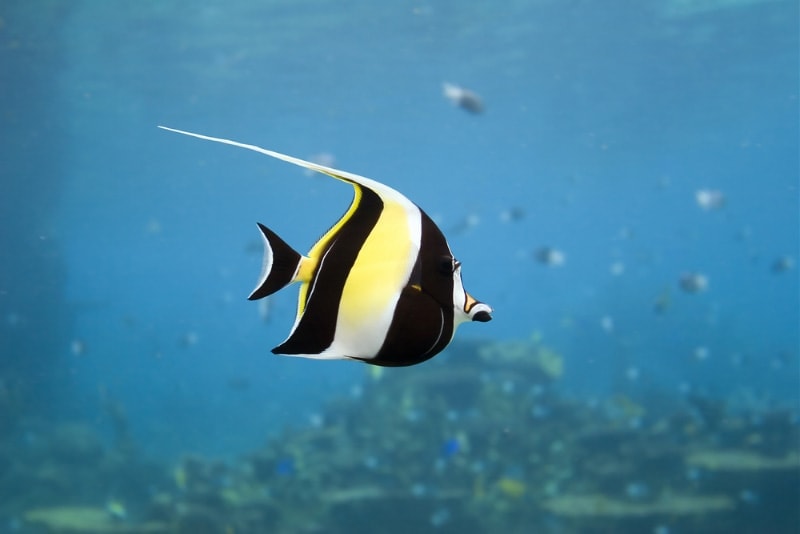
Which Species of Fish Is Gill?
At first glance, you might mistake Gill for an Angelfish or schooling Bannerfish (Henio diphreutes) because of his appearance. However, those are not his true species. Gill is a Moorish Idol fish, a type of marine (saltwater) fish and the sole member of the Zanclid family.
We can tell that Gill is a Moorish Idol fish by his disc-shaped body, elongated tubular snout, long dorsal fin, and horn-like projections above his eyes. Thick black and white stripes with hints of yellow are a classic pattern and coloration seen in Moorish Idol fish.
Moorish Idol Fish Overview
Let’s take a closer look at Gill’s species below.
Origins and Natural Habitat
Moorish Idol fish, scientifically known as Zanclus cornutus were first described in 1758 by Carl Linnaeus. They were first placed in the Chaetodon genus before being reclassified as Zanclus. Moorish Idol fish are closely related to Sturgeon fish and Butterfly fish.
Their native habitat ranges from the Indo-Pacific Ocean to tropical Eastern Pacific waters, the Galapagos Islands, and East Africa. Their natural habitat consists of flat reefs, seaward reefs, murky harbors, and shallow saltwater around 9.8 to 590.6 feet deep. They are tropical fish that live at temperatures between 72° to 78° Fahrenheit (22° to 26° Celsius).

Size
Moorish Idol fish are not very large fish at only 6 to 9 inches long as adults. The larger specimens are found in the wild rather than in captivity. Gill was likely fully grown when Nemo found him.
Lifespan
The lifespan of a Moorish Idol fish is a few decades in the wild. Unfortunately, their lifespan is much shorter in captivity at 2 to 4 years.
Diet
Moorish Idol fish are omnivores that feed on sponges, algae, tunicates, small crustaceans, worms, and mollusks. Their teeth are long and bristle-like located in their tubular mouth. They use their teeth to catch prey, scrape algae from rocks, and defend themselves from other fish.
It is difficult to feed Moorish Idol fish in captivity because they often refuse food. They have high metabolisms and need to be fed several times a day. Their captive diet should include quality pellets, worms, Mysis shrimp, nori, and sponges.
In Aquariums
Aside from being found in the wild, small populations of Moorish Idol fish are part of the aquarium trade industry. They are kept in aquariums for ornamental purposes, just like Gill from Finding Nemo.
However, Moorish Idol fish have a reputation for being incredibly difficult to care for and many of them fail to thrive in aquariums. Some Moorish Idol fish never make it more than a month in aquariums, prompting them as the “worst ranked” saltwater fish you can own. They are better suited for experienced marine fish keepers who care for them in professional environments.
Furthermore, Moorish Idol fish are difficult to quarantine, making them more likely to spread disease to current species. Most specimens are removed from their wild habitat to live a highly stressed and short life in captivity. This might explain why Gill was so eager to escape his aquarium and life in captivity. His unhappiness in an aquarium is evident throughout his role in the film.
While it might seem cool to keep the same fish species portrayed in our favorite film, some species have not adapted to captivity and are better off in their wild habitat.
3 Fascinating Facts About Moorish Idol Fish

Final Thoughts
Gill is an animated fish from the 2003 film Finding Nemo and played a significant role in the movie. Although Gill was previously thought to be an Angelfish due to the similarities in appearance, we now know he is a Moorish Idol fish and the only member of the Zanclidae family. Moorish Idol fish have a reputation for being challenging to keep in captivity, which can be seen in Gills’ eagerness to escape to the wild.
Featured Image Credit: Ian Scott, Shutterstock





